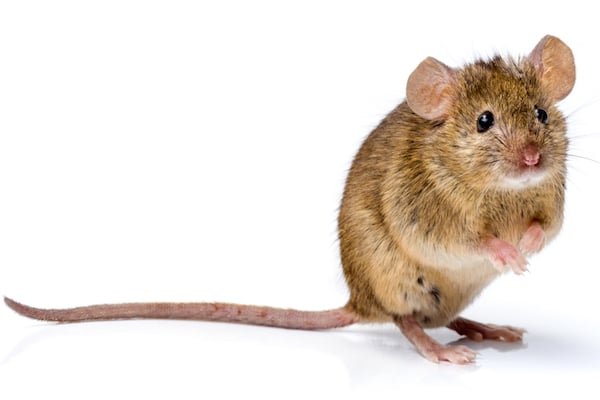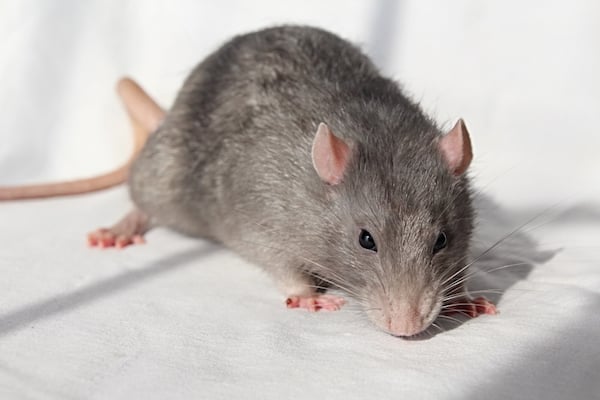Did you know that almost all the rats and mice that invade people’s homes belong to just two species? Seriously--one type of mouse and rat have become so dominant in their environments that they’ve become “THE mouse” and “THE rat.” If you’ve ever had a rodent infestation in your home, your infiltrator was almost certainly one of the two furry little baddies we’re profiling here.
There’s upside to the ubiquity of these rodential rascals, however. These two species have unmistakable characteristics and habitat preferences. If you learn these characteristics and preferences, you can make your home an untenable proposition. Consider these pesky problems nature’s criminals, and this is Plunkett’s “Rodents Least Wanted.”

House Mice (Mus musculus)
\House mice are aptly named because they’re by far the most common mouse people find in their homes. You’re familiar with what a house mouse looks like if you’ve ever seen a mouse in a pet store; the house mouse’s familiarity and comfort around humans makes it an ideal pet--and a likely home invader!
House mice are not particularly dangerous. They’re not aggressive and aren’t considered a likely vector for the spread of disease. House mice are a nuisance in homes because they’re dirty and they can bite and damage property, but they don’t pose a significant risk to your well-being.
Identifying Characteristics
One of the easiest ways to spot a house mouse is how often it moves. House mice are very curious and explore whenever they’re not eating or asleep. Although they come out more often at night, mice can be spotted roaming during the day, too. House mice range in color from light to dark brown, grey, or black, and they’re very small--adult house mice are only 7.5 to 10 centimeters long and usually only weigh a pound and a half. House mouse droppings are tiny, dry, and pellet-shaped; they often look like rods with pointed ends.
One more easy way you look for house mice is to find gnaw marks on furniture, boxes, and anything else that could be reached from the floor. House mice essentially never stop teething, so they’re constantly on the look-out for things to munch on. Look for cardboard or paper shavings, along with gnaw marks on baseboard and siding, especially along corners.
Why They Want In
Mice don’t hibernate, so as the temperature begins to drop, they need to find
a place where they can stay warm and still find food.People’s houses are the perfect place for mice to wait out the winter; they’re warm, dark, and they have plenty to eat and drink.
How They Get In
Mice are great jumpers, climbers, and swimmers. They can fit through any space that’s pen-cap-sized or bigger, including gaps in the foundation, siding, insulation, or even near utility lines. Even little cracks that you might assume would be inaccessible usually aren’t. Motivated mice can jump or climb just about anywhere.
Mice can also use the landscaping in your yard as cover and a kind of springboard to access the house. Some house mice have been known to crawl up downspouts or chimneys to come into a house through the roof!
If you want to keep mice out, especially in the winter, you have to be thorough.
Follow these steps and double-check every gap you seal. The only way to keep mice out is to give them no way in.

Norway Rat (Rattus Norvegicus)
Rats are basically bigger, nastier mice. The Norway rat, also known as the “brown rat,” is by far the most common rat.
Every rat in New York City (and there are a lot of them), is a Norway rat. Norway rats have become so pervasive because they’re highly adaptable. The species evolved to thrive in human-dominated environments extremely efficiently. Norway rats can eat nearly anything. They establish a foraging territory, which they effectively utilize for all the resources they need. Unlike mice, Norway rats can be aggressive when cornered, and may bite humans in an attempt to defend themselves or escape.
Unfortunately, rats also carry more diseases than mice. Norway rats are a known carrier and transmitter of pathogens that may cause Weil’s disease, cryptosporidiosis, viral hemorrhagic fever, rat bite fever, and more. While mice are mostly a harmless nuisance, rats present a bigger problem.
Identifying Characteristics
Norway rats are between 8 to 10 inches long and weigh 9 to 12 ounces. Their fur is coarser than a mouse’s, and it’ll probably be darker brown or grey, and dirtier. Norway rats’ eyesight is notoriously bad, so most rats stick to a set routine of foraging. If you look closely enough, you may be able to see grease stains or dirt marks where rats repeatedly rubbed against the wall to help them find their way.
Norway rats burrow to make nests where they can stay warm, stockpile food, and protect their young. Look for bundles of refuse, dirt, dust, and other grime, particularly in dark corners or under low furniture. A common rat’s nest might look like a wad of crumpled up newspaper. Rats also burrow into insulation and packing materials, using their teeth to create simple tunnels. These tunnels serve as nests, as well as places to rest and hide during the day.
Why They Want In
We’ve given you some bad news already, but unfortunately, it’s going to get a little worse before it gets better: rats need a warm, safe place to have babies. Yeah. Sorry. Norway rats reproduce very quickly. As rat populations grow, so does the filth they produce and the damage they can cause.
Rats will eat anything, but they prefer some foods over others. Human trash attracts rats like nothing else. Dirty dishes and full garbage bags are like buffets for the Norway rat, and the babies they may be carrying with them. Pregnant rats need more food to sustain them through the difficult process of growing children, so the rats that seek out homes for easy food are often pregnant.
How They Get In
It’s harder for rats to get into houses than mice, but only
a little. Norway rats can squeeze through holes the size of a quarter. They look for easy ways to get in, such as under poorly seated doors or windows, or through gaps in the foundation or siding. Rats are also great climbers and can chew through decaying wood on the roof of homes. They can even chew through cables and utility lines to create passages for themselves, or burrow underground to get at exposed insulation.
Keeping rats out will take a little more doing than dissuading mice. You’ll definitely want to seal any cracks and gaps, but it’s important you also make sure the gaps are sealed with material that can’t be chewed through. Make sure the threshold between your doors is sealed tight against the frame and can’t be peeled back. Pack insulation tightly, and use a dehumidifier in your attic and basement--rats are attracted to moisture, as well as darkness and heat.
If you find you’re having problems with either of these persistent little pests, let Plunkett’s know right away. We have
over 100 years of experience combating the “Least Wanted,” and we know how to get them out and keep them out.
Call today with questions or to schedule a consultation.








